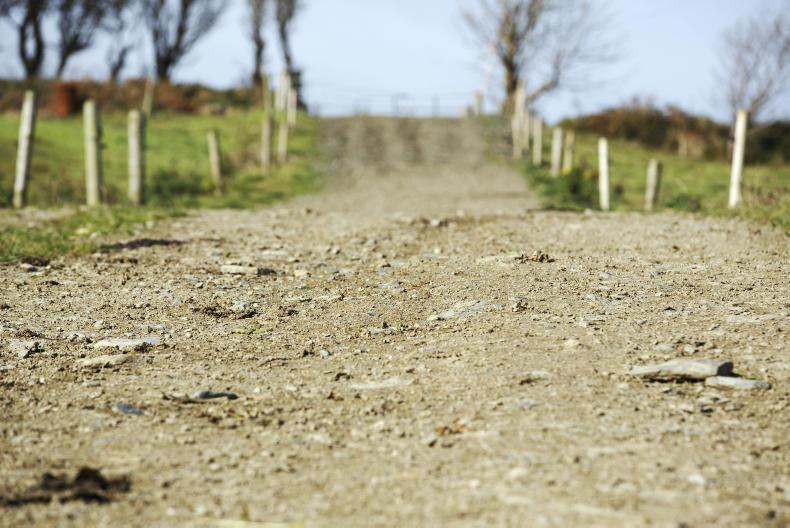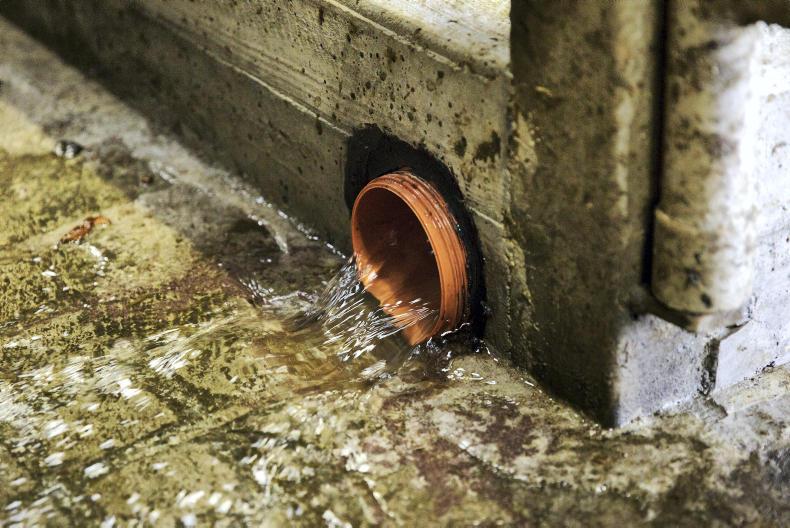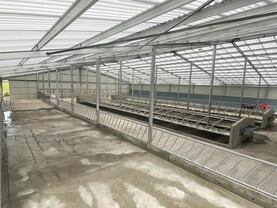A dairy cow is a metabolic athlete, turning forage into milk. She likes to spend her day feeding or grazing, or else lying down ruminating. She will also take a couple of hours in her day walking to the parlour and being milked – usually twice daily.
A lame cow is sore, she won’t eat and when she walks she will be in pain. Lameness has a profound effect on this athlete’s performance. Lame cows are said to cost €150-€300/case, It is also one of our big welfare challenges in the dairy industry.
While no farm can expect to have zero lameness, we must aim for a target of below 5% lameness.
Firstly, we must understand why cows get lame. Lameness is either physical damage to the foot (hoof) from mechanical sources or from infections and sometimes, however rarely, from the diet, with conditions like laminitis. This can result in varying degrees of lameness, from mild to very severe. Mechanical lameness is usually from extra pressure on the foot, or pressure on the cow. Mobility scoring is used to pick up lame cows and watch for incidence at herd level. We can do this by standing back from cows and watching them entering or leaving the parlour.
At this time of year, I like to go out and look at animals leaving the paddock and walking in at their ease. We score animals from one to five, with one being sound (not lame) to five being severe and non-weight bearing.
It might sound obvious, but very lame animals are usually suffering from acute trauma or severe infections. Mild lameness can be caused by bruising, which may indicate a more sub-clinical problem within the herd. Remember that cows are always telling us something, when they are not performing there is always a reason. Lameness in cows has a knock-on effect on so many other areas: like appetite and immunity. A lame bull can be even more catastrophic.

Good roadways reduce lameness issues.
The grazing cow hopefully spends the vast majority of her lactation walking to work. The distance she has to travel is important, but the surface of the roadway is even more crucial. With our adverse weather, maintaining roadways can be difficult, so getting the surface and the camber right are two key ingredients to lower levels of mechanical lameness.
1 The walking transition is when a cow leaves the roadway and touches onto concrete. This can be a risk area for stones being brought into the collecting yard. Having a step up or a transition of mulch or astro turf allows for cows to lose debris before they reach the concrete collecting yard.
2 Have plenty space in your collecting yard and never push cows with a backing gate. A backing gate should be used as a guide and cows should have enough space to settle in a collecting yard, waiting to be milked. Heads up and jostling in the herd is a recipe for white line disease in your cows from all that twisting, causing pressure on the hoof wall.
3 Don’t push cows faster than 3km/h, a cow’s natural walking speed is less than 3km/h. When she is pushed with a dog or a quad she rises her head and doesn’t pick her next step. When this happens she is more prone to landing on a stone and we get more bruising and incidents of white line disease. Also let cows enter the parlour and leave at their own pace. Getting cow flow right on your farm will have the greatest impact on mechanical lameness, but it will also leave cows less stressed.
4 Rubber at high traffic areas isn’t always possible, but it does raise the point that where cows are asked to do tight turns you see more lameness. Cows like to enter and leave parlours in a straight line, so when they are twisting at speed we can see problems occurring. Having non-slip rubber in these high traffic areas may reduce the pressure on the foot.
5 Treat lame cows early and for the right condition. Don’t wait to lift the legs of a lame cows because infections will go deeper and inflammation get worse. Record the causes of your lameness over the year and then look for patterns in either infections or mechanical lameness.
6 Regular footbaths can dramatically reduce the spread of infectious lameness like fouls and mortellaro. They aren’t great for treating all infections, so individual cows still need to be looked after, but footbaths provide an ongoing way of controlling the spread. Permanent footbaths work well at the exit from parlours, about 3m-4m in length and, depending on the size of the herd, about one to two cows wide. Remember cows like to step up (10in) into a footbath and have a secure grip on the concrete inside the bath.

Footbath drainage is important.
7 Clean, dry feet can make lameness a very low risk indoors. This means careful attention to the environment and not allowing slurry to build up where cows are standing. Having scrapers working properly and regularly is key. If cows are very loose indoors, look at their diet and the amount of fibre being fed. Plenty of fresh air and ventilation also help reduce the build-up of bugs on the cow’s foot.
8 Complete basic training around hoof care and paring. This will allow you to treat the urgent cases, with the hoof trimmer doing the main bulk of the work. Have a good, sharp knife and disinfect it between cows. Also incorporate anti-inflammatory injections into all treatments of lame cows for better results.
9 Review your lameness plan annually. Always set a goal to be better and pay closer attention to lameness in the herd during risk periods, like wet or bad weather. Have a strict bio-security plan to keep infectious disease, particularly mortellaro, out of your farm.
A dairy cow is a metabolic athlete, turning forage into milk. She likes to spend her day feeding or grazing, or else lying down ruminating. She will also take a couple of hours in her day walking to the parlour and being milked – usually twice daily.
A lame cow is sore, she won’t eat and when she walks she will be in pain. Lameness has a profound effect on this athlete’s performance. Lame cows are said to cost €150-€300/case, It is also one of our big welfare challenges in the dairy industry.
While no farm can expect to have zero lameness, we must aim for a target of below 5% lameness.
Firstly, we must understand why cows get lame. Lameness is either physical damage to the foot (hoof) from mechanical sources or from infections and sometimes, however rarely, from the diet, with conditions like laminitis. This can result in varying degrees of lameness, from mild to very severe. Mechanical lameness is usually from extra pressure on the foot, or pressure on the cow. Mobility scoring is used to pick up lame cows and watch for incidence at herd level. We can do this by standing back from cows and watching them entering or leaving the parlour.
At this time of year, I like to go out and look at animals leaving the paddock and walking in at their ease. We score animals from one to five, with one being sound (not lame) to five being severe and non-weight bearing.
It might sound obvious, but very lame animals are usually suffering from acute trauma or severe infections. Mild lameness can be caused by bruising, which may indicate a more sub-clinical problem within the herd. Remember that cows are always telling us something, when they are not performing there is always a reason. Lameness in cows has a knock-on effect on so many other areas: like appetite and immunity. A lame bull can be even more catastrophic.

Good roadways reduce lameness issues.
The grazing cow hopefully spends the vast majority of her lactation walking to work. The distance she has to travel is important, but the surface of the roadway is even more crucial. With our adverse weather, maintaining roadways can be difficult, so getting the surface and the camber right are two key ingredients to lower levels of mechanical lameness.
1 The walking transition is when a cow leaves the roadway and touches onto concrete. This can be a risk area for stones being brought into the collecting yard. Having a step up or a transition of mulch or astro turf allows for cows to lose debris before they reach the concrete collecting yard.
2 Have plenty space in your collecting yard and never push cows with a backing gate. A backing gate should be used as a guide and cows should have enough space to settle in a collecting yard, waiting to be milked. Heads up and jostling in the herd is a recipe for white line disease in your cows from all that twisting, causing pressure on the hoof wall.
3 Don’t push cows faster than 3km/h, a cow’s natural walking speed is less than 3km/h. When she is pushed with a dog or a quad she rises her head and doesn’t pick her next step. When this happens she is more prone to landing on a stone and we get more bruising and incidents of white line disease. Also let cows enter the parlour and leave at their own pace. Getting cow flow right on your farm will have the greatest impact on mechanical lameness, but it will also leave cows less stressed.
4 Rubber at high traffic areas isn’t always possible, but it does raise the point that where cows are asked to do tight turns you see more lameness. Cows like to enter and leave parlours in a straight line, so when they are twisting at speed we can see problems occurring. Having non-slip rubber in these high traffic areas may reduce the pressure on the foot.
5 Treat lame cows early and for the right condition. Don’t wait to lift the legs of a lame cows because infections will go deeper and inflammation get worse. Record the causes of your lameness over the year and then look for patterns in either infections or mechanical lameness.
6 Regular footbaths can dramatically reduce the spread of infectious lameness like fouls and mortellaro. They aren’t great for treating all infections, so individual cows still need to be looked after, but footbaths provide an ongoing way of controlling the spread. Permanent footbaths work well at the exit from parlours, about 3m-4m in length and, depending on the size of the herd, about one to two cows wide. Remember cows like to step up (10in) into a footbath and have a secure grip on the concrete inside the bath.

Footbath drainage is important.
7 Clean, dry feet can make lameness a very low risk indoors. This means careful attention to the environment and not allowing slurry to build up where cows are standing. Having scrapers working properly and regularly is key. If cows are very loose indoors, look at their diet and the amount of fibre being fed. Plenty of fresh air and ventilation also help reduce the build-up of bugs on the cow’s foot.
8 Complete basic training around hoof care and paring. This will allow you to treat the urgent cases, with the hoof trimmer doing the main bulk of the work. Have a good, sharp knife and disinfect it between cows. Also incorporate anti-inflammatory injections into all treatments of lame cows for better results.
9 Review your lameness plan annually. Always set a goal to be better and pay closer attention to lameness in the herd during risk periods, like wet or bad weather. Have a strict bio-security plan to keep infectious disease, particularly mortellaro, out of your farm.








 This is a subscriber-only article
This is a subscriber-only article










SHARING OPTIONS: